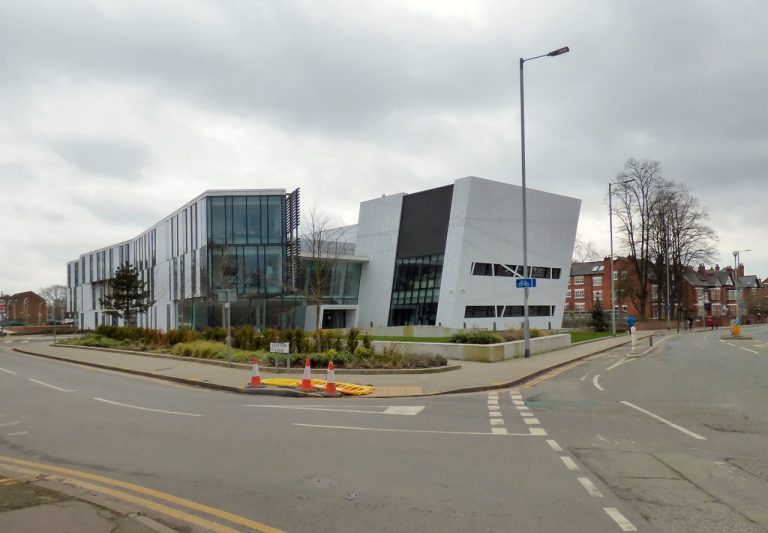LIVERPOOL City Council has appointed a fab team to produce a landmark vision and investment strategy for the epicentre of Liverpool’s musical heritage. A team led by P-IE (Planit Intelligent Environments) has been chosen to deliver a Spatial Regeneration Framework (SRF) for the area around Mathew Street – home of the world famous music venues the Cavern Club and Eric’s. Also encompassing the adjacent Williamson Square area, the framework will enable the council to steer the future use of existing buildings and identify opportunities to attract new investment. P-IE, which has more than two decades experience working on some of the UK’s largest regeneration projects, will deploy their team – comprising urban designers; music historians; destination economists; space-programmers and Planners – to devise a spatial plan which will also embody a new vision document aimed at enhancing the quality of attractions in the area and expanding on the city’s £90m a year music heritage industry – focused around the Beatles – which currently supports over 2,000 jobs. P-IE’s previous work includes the Anfield SRF alongside the design and delivery of the restoration of Stanley Park and the public spaces surrounding Liverpool Football Club’s Anfield Stadium. Outside of Liverpool they were design lead for the award-winning Manchester Residential Quality Guidance and the city’s newest public square – Sadler’s Yard – at the heart of the Cooperative Group’s historic NOMA estate. They are currently involved in strategic and delivery projects across England, Wales and Northern Ireland. The SRF masterplan, which will include consultation with stakeholders, local businesses and residents will explore: A more diverse mix of complimentary building uses that could operate throughout the day and evening An enhanced and more coordinated music tourism offer, focused on Liverpool’s recently awarded UNESCO World City of Music status, with enhanced visitor attractions and interpretation The redevelopment of derelict, under-used and undesirable buildings and sites A diverse and inclusive programme for Williamson Square and the Playhouse Theatre A comprehensive public art strategy, building upon the significant investment LCC has made in the public realm over the last decade A way-finding strategy to make the neighbourhood more legible and permeable Active ground floor uses to create a more vibrant and inviting environment – with an equitable focus on the citizens of Liverpool alongside our international visitors Defining a clearer network of streets and squares – focused on the pedestrian experience The report comes as figures show Liverpool’s hotel sector is also booming, with occupancy levels at record breaking levels, and the number of hotel rooms across the city set to grow by 14% to more than 9,300 over the next two years. A recent economic impact report found that the city’s Beatles related industry has been growing at 5-15% a year following the city’s year as European Capital of Culture in 2008 with Cavern City Tours and the Cavern Club alone now attracting 800,000 visitors per annum and 80% of the Hard Day’s Night Hotel guests classed as international. But a tourism report has found visitors are increasingly looking for a quality experiential visit and there is a clear need to curate not just a Beatles Heritage offer, but a clearer proposition around Liverpool’s status as a city with a pivotal role in the story of popular and contemporary music. Joe Anderson, Mayor of Liverpool, who has also created a Beatles Legacy group, said: “Liverpool’s musical heritage is known around the world but we can and must do more to showcase it to visitors who travel thousands of miles from all corners of the globe because of it. “This is about enhancing and expanding what we already have, particularly around Mathew Street which has been at the heart of the city’s music scene for decades, with venues such as Eric’s and the Iron Door being as influential as the Cavern Club. “This is a unique opportunity to establish an experience no other city can offer, with high quality design which will sustain thousands of jobs in the hotel, retail and hospitality sectors for generations to come. “P-IE have a first class track record in delivering quality design and I am delighted that we have been able to secure their services to carry out this crucial piece of work.” Peter Hooton, Chair of The Beatles Legacy Group, said: “Carl Jung famously said that Liverpool is the pool of life, and it is fitting that he is immortalized on Mathew Street, which has been the beating heart of the city’s music scene for generations. “There is a huge amount of untapped potential around the city’s pivotal role in music, which is why it is vital we seize this opportunity to make the most of it.” Bill Addy, Chief Executive of Liverpool BID Company, which represents 1,500 businesses in Liverpool city centre, added: “Mathew Street is one of the city’s key assets and without doubt one of the world’s most iconic music heritage sites. “The Cavern Quarter sits within the Retail & Leisure BID. Our levy payers located there are determined to improve the visitor offer in the area and I know there has been a concerted effort over the years by the private sector to invest in projects and initiatives to achieve this. “We welcome the SRF and the opportunity it presents in working together to maximise the area’s potential for the good of businesses and visitors alike.” Pete Swift, Managing Director at P-IE, added: “We picked our team not just on their experience in producing design and planning guidance but on their knowledge and passion for Liverpool and its wider musical heritage. “We are local and global – as is the appeal of the Beatles and the immense cannon of Liverpool bands, singers and their music. For us then, this is no ordinary planning project, where we might focus on what a place will look like at the end, but rather how to control the journey along which Liverpool will showcase its rightful status as the most influential music city on the planet.










